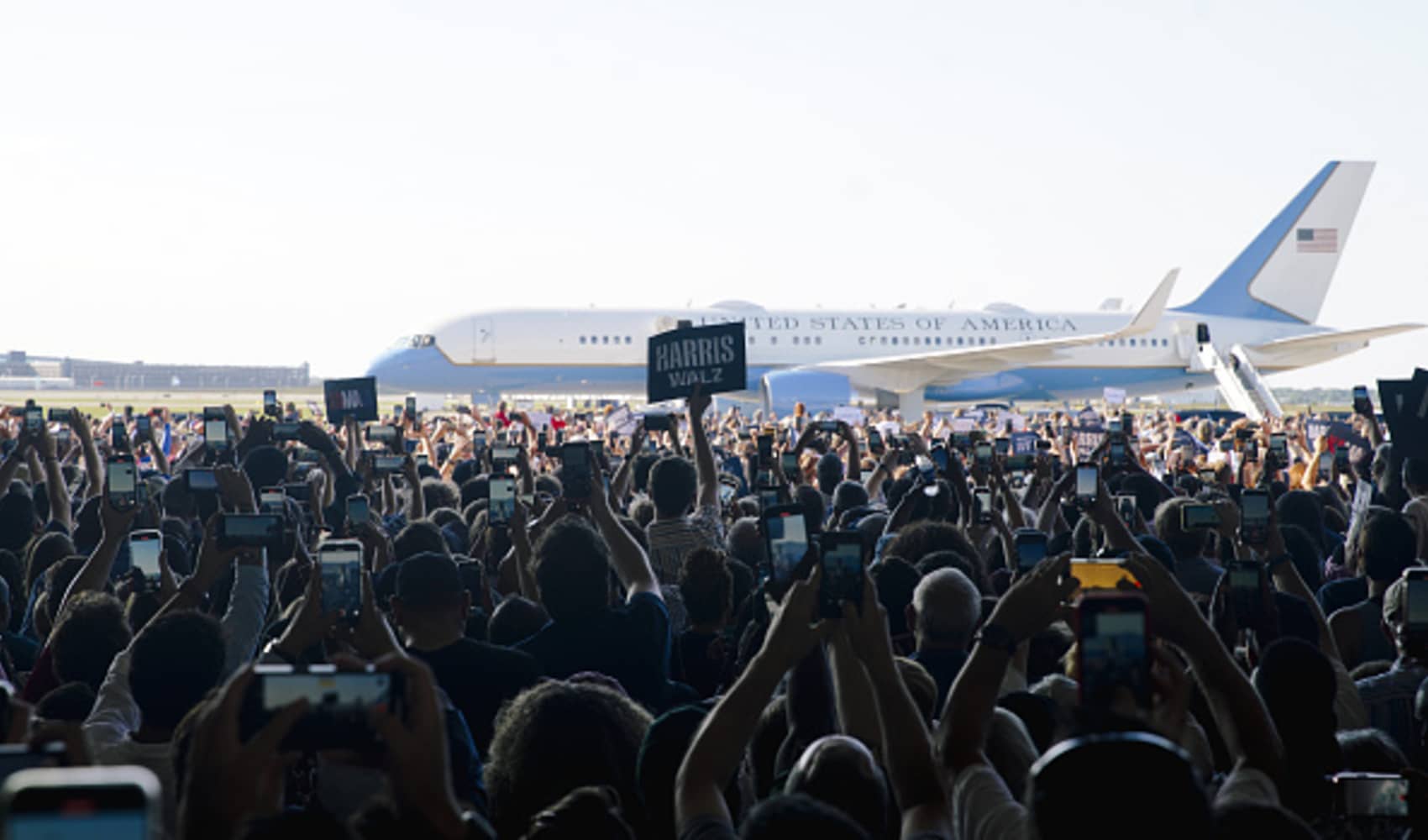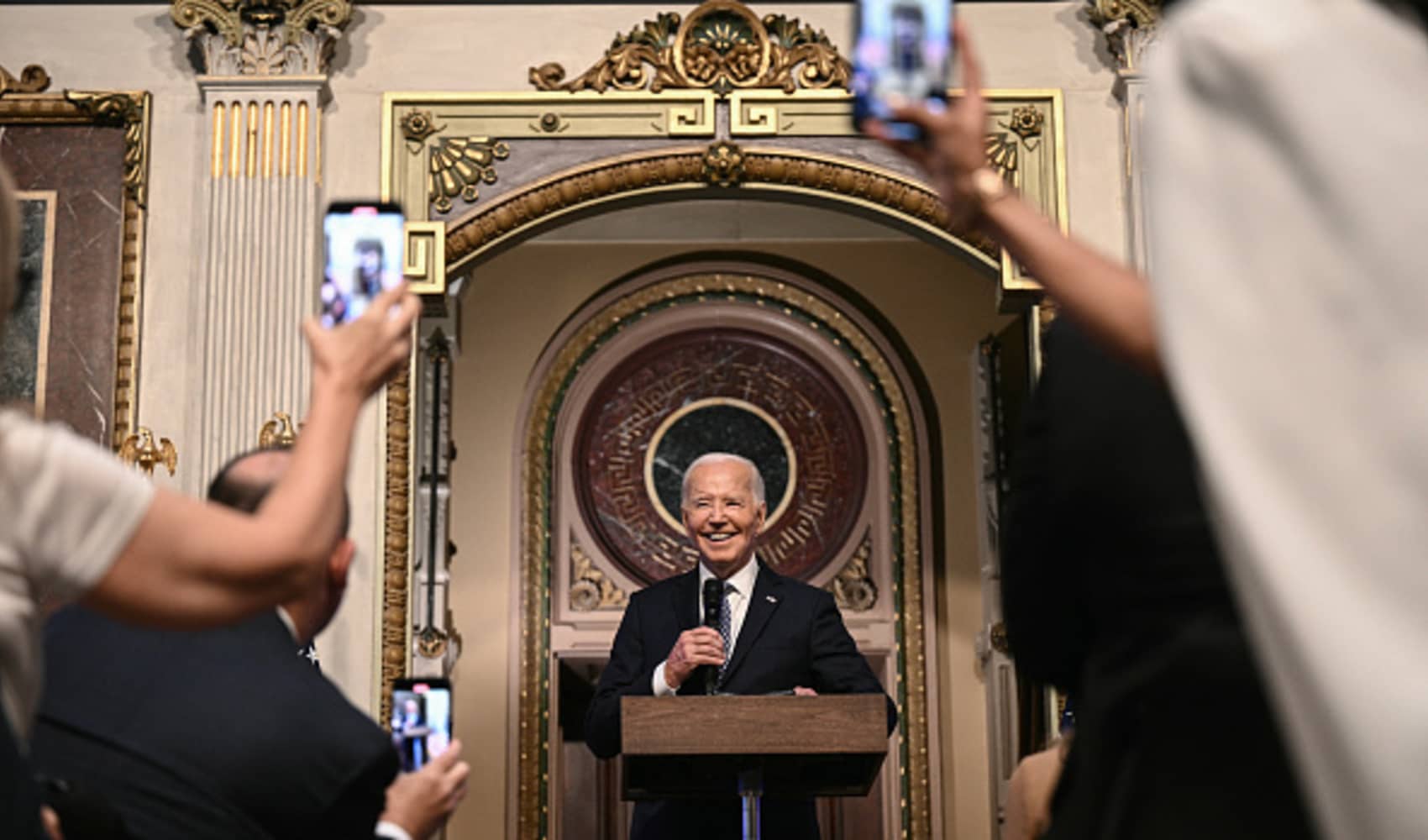Artificial intelligence is emerging as a multipronged issue in the 2024 presidential race.
From the question of how AI should be handled in policy to former President Donald Trump's false claim that an image of Vice President Kamala Harris' crowd was artificially generated, the emerging technology has a prominent position in the political landscape.
It's a new and difficult hurdle people all around the world are contending with, and while it can be unsettling, experts and officials are doing everything they can in an effort to help people discern what's real and what's not.
In early August, a photo of Harris and her running mate, Gov. Tim Walz, walking toward a crowd in Detroit was questioned by opponents on social media. Trump claimed that "she 'A.I.'d' it" and that "there was nobody there," as did some of his allies. They pointed to reflections on the plane as proof that it was AI-generated.
The false claims are refuted by videos, and by the accounts of attendees. The Harris campaign said 15,000 people were at the Detroit airport rally, a figure substantiated by reporters, photographers and video journalists from multiple news organizations. But the misinformation continued to spread.
"There's many indications that it was real," said Matt Groh at Northwestern University.
Experts like Groh say several things stood out when proving the picture's legitimacy.
"It was real because you could see the crowd from many different angles, because there's many different photographs of this," Groh said. "Both many photos from the crowd, and also photos looking into the crowd."
"Some of these models, they are pretty good, so they do take a little bit more investigation to try to figure it out. But there's, like, nothing indicated it was AI-generated at all," said Bryan Plummer of Boston University.
But for many, it's not that simple. And as technology gets better, telling the difference may get more tricky.
Sign up for our Breaking newsletter to get the most urgent news stories in your inbox.
"They have to be wary of information that is coming their way, sadly," Massachusetts Attorney General Andrea Joy Campbell said.
Campbell is among those looking to put safeguards in place.
"All of our laws are applicable to AI, just as they would be applicable to a human being who is doing some wrongdoing," she said.
She's urging action and accountability from all levels of government.
"We are making sure that we're doing it collectively and collaboratively, because sometimes the company or individual pushing misinformation may not be based in Massachusetts," Campbell said.
In making a judgment about anything you see on the internet, you should check the source. Make sure the person or organization that posted it is reliable. In a case like the crowd size claim, see if other images show different angles of what you're looking at, and be on the lookout for anything in the image that looks suspicious.



